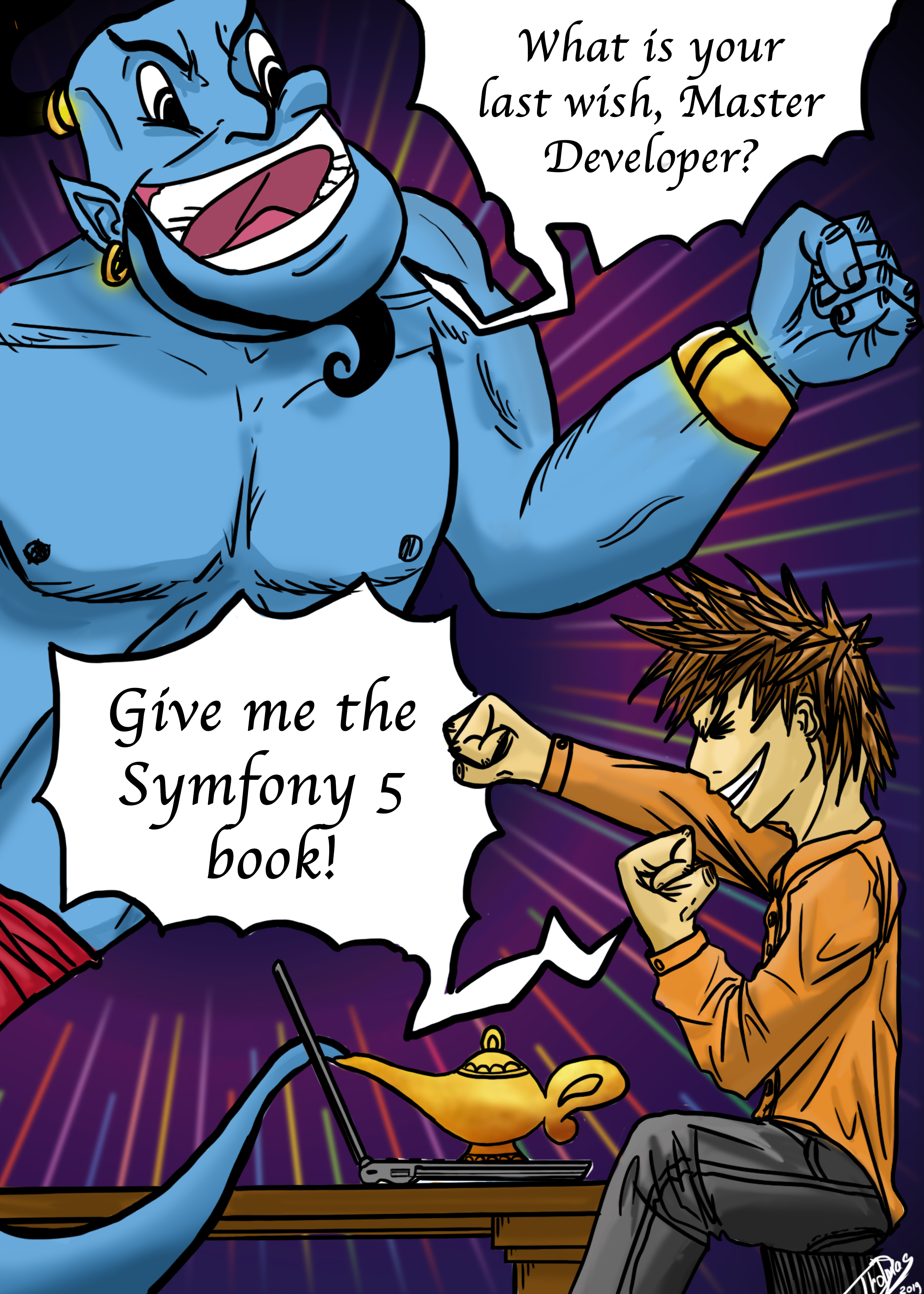Acknowledgments
I love books. Books that I can hold in hands.
The last time I wrote a book about Symfony was exactly 10 years ago. It was about Symfony 1.4. I have never written about Symfony since then!
I was so excited to write again about Symfony that I finished the first draft in a week. But the version you are reading took way more time. Writing a book takes a lot of time and energy. From the cover design to the page layout. From code tweaks to peer reviews. It is almost never finished. You can always improve a section, enhance some piece of code, fix some typos, or rewrite an explanation to make it shorter and better.
Writing a book is a journey that you don't want to do alone. Many people contributed directly or indirectly. Thank you all!
I want to sincerely thank all the great people who spent a lot of time reviewing the content to spot typos and improve the content; some even helped me write some of the code snippets:
- Javier Eguiluz
- Ryan Weaver
- Titouan Galopin
- Nicolas Grekas
- Kévin Dunglas
- Tugdual Saunier
- Grégoire Pineau
- Alexandre Salomé
Translators
The official Symfony documentation is only available in English. We had some translations in the past but we decided to stop providing them as they were always out of sync. And outdated documentation is probably worse than no documentation at all.
The main issue with translations is maintenance. The Symfony documentation is updated every single day by dozens of contributors. Having a team of volunteers translating all changes in near real time is almost impossible.
However, translating a book like the one you are currently reading is more manageable as I tried to write about features that won't change much over time. This is why the book contents should stay quite stable over time.
But why would we ever want non-English documentation in a tech world where English is the de facto default language? Symfony is used by developers everywhere in the world. And some of them are less comfortable reading English material. Translating some "getting started" documentation is part of the Symfony diversity initiative in which we strive to find ways to make Symfony as inclusive as possible.
As you can imagine, translating more than 300 pages is a huge amount of work, and I want to thank all the people who helped translating this book:
Family Love
Family support is everything. A big thank-you to my wife, Hélène and my two wonderful children, Thomas and Lucas, for their continuous support.
Enjoy Thomas's illustration... and the book!
